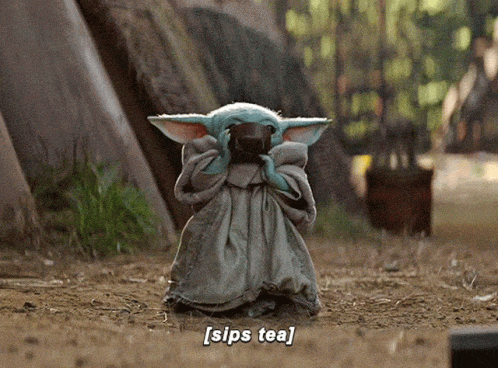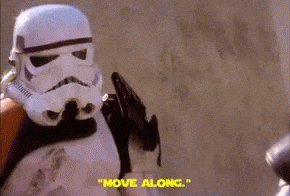
Hello There everyone! I’m happy to announce that I’ve been upgraded to an official Grade 9 student. The mystical and mysterious world of Grade 9 has been… well, mystical and mysterious. I’m very glad I got through my first assignment.
Also, we got a couple of new teachers this year, and I just finished a math project with our new Scimatics teacher, Mr. Harris (not to be confused with the new Humanities teacher who is also named Mr. Harris.)

Anyways… today, I’m going to introduce you to our most recent project in Scimatics… “Game of Exponent Laws.”


For this project, we dabbled in some exponent laws (as mentioned in the title of the assignment). We also relearned our game making skills, and made another one, just like the Scimatics project we created last year.
Although, this time, we had to include the key element, exponents, which turned out far harder than expected.

We were assigned to work as a group for this project, and I paired up with my friends: Sabrina and Fraser.
Be sure to check out their blogs as well!

We created a colourful game called “Centipede Hill”, which is basically like a version of snakes and ladders, but more complicated (centipedes are the opposites of snakes since they have a ton of legs).
Anyways, I believe we did well together, and I’m very proud of the final product!

As always, we began this project with a mind map. This time I even managed to include some images.
Here’s mine:

Also, I learned many new skills for this project, such as making little critters out of Sculpey. I even discovered the importance of using the right materials when sculpting, because I failed a lot. I was assigned to create some game pieces for the board, and this turned out to be the most memorable thing I did for this project.
I did have many failures before I got to the final product, but I feel like I learned a lot from this experience. The clay I was originally going to use was already dried out when I opened it (and I had just bought it 🥲)
It was such a waste of $4.

Since the clay was as hard as a rock and deemed unusable, I had to find an alternative. While looking through my old stuff, I luckily found some old clay that was actually “sculpt-able.”
Like most clays, I had to dry it. However, I had made the terrible mistake of assuming it was one of those clays that harden when baked in the oven.
Here’s a centipede before he went into the blazing inferno of death…

And here he is afterwards…

Yeah, he kinda melted on me.
After persuading my wonderful and amazing mom to take me to Micheals, I was able to purchase some Sculpey and recreated some critters.
Luckily, these ones survived the oven…


Anyways, I also helped create/format some cards for the game to include the exponent laws (centipedes aren’t the best representation for math concepts).
Here’s some of the cards:


At first we designed the board with squares (like snakes and ladders), but to be honest, it didn’t look as great as I wanted it to be. So, I decided to take out my handy dandy circle cutter and create a board that actually looks like a giant centipede.
80 or so circles and a whole lot of centipede legs later, we finished the board!
As an avid “vintage” board gamer, I remembered a game my dad used to dream about as a kid; Fireball Island!

This game was unique, because it had a rolling ball that could knock down pieces. We thought it would be cool if we could also incorporate this idea into our game. So we made our board have an incline, which allowed a ball to roll and “theoretically” knock down the centipedes.
Here’s a video of this in action!
Unfortunately, our vision didn’t quite work as planned. I guess I fed my centipedes a little too much spinach…

Anyways… here’s our final game!








If you’d like to read the rules, check them out here!
I’m still amazed by how our game turned out, and I’m super happy with the end result!



Reasoning and Analyzing:
This competency required us to have understandable rules in our game. I believe we did quite well with making our “win conditions” simple (since the only goal is to make it to the top of the hill.) However, there are many ways in which we could improve.

For example, our rules are definitely too complicated. We had a lot of components in our game, such as “earthquake” and “hardest questions.” We got so caught up in our ideas that it lead us astray a bit, and we added a bit too much. Although I absolutely love some aspects of our game, I feel that it may have had too many components and was hard to understand.
Also, we didn’t have much of a “point system.” Besides “making it to the top of the hill”, there wasn’t much opportunity for points. I think it would have been fun to have this included in the game.
Looking back, I think we did pretty well, and our game was very creative. Next time, I’ll make it my top priority to make sure the instructions are concise and understandable (and that we focus on the most important parts of our project.)

Communicating and Representing:
This competency requires us to create interesting instructions for how the players take their turns. We also had to include examples, and integrate at least 4 different exponent laws. I think we did really well in this area, and we tried our best to include everything required.
Our game is very creative, and we included a lot of different aspects (as mentioned earlier). Although this restricted us in clarity, we had a lot of places to include exponents and interesting obstacles.

For example, we had “hardest questions”, which allows the player to move further in the game if they answer a difficult question correctly. For these questions, we referenced some difficult equations from our worksheets. We also had a couple spots on the board that initiated an “earthquake”. Although this is my favourite and most creative aspect of the game, it doesn’t really include math at all.

Next time, I’d like to include math into more parts in the game, and make the exponents more subtle. I found that it was slightly less enjoyable to play, because of all the math aspects. (Sorry Mr. Harris!) In conclusion, I still believe we did really well in this area.

Applying and Innovating:
Although we occasionally went off topic (to rant about nerdy things like animation, Star Wars, and iPhone 13), I believe we were fairly competent with this competency. We could have done better in some areas, but personally, I think I’ve improved a lot since last year in terms of time management.

When we got indecisive on board game ideas, we decided to have a quick zoom meeting to debate on it. In the end, we ended up with Centipede Hill. Despite being behind on a few things, we managed to catch up and come up with something. Also, since I was sick for a week, we still tried our best to stay in touch, and I didn’t struggle much returning. Our teamwork was pretty good, and we all did our parts in time.
I’m absolutely terrible at time management, but we fought to get it completed in time anyway. I believe I’m improving in this area, and I hope to continue on this path. In conclusion, I think this was one of my favourite group projects that I’ve done for PLP!



In the end, I’ve learned a lot about game making from this project, and how math can be included into it. I feel quite accomplished with the end result, and we tried our best.
Many games have to include concepts like probability into them. In our game, we put a ton of interesting aspects (like earthquake) to make the game seem more risky and “fun.” In fact, most spots on the board were special spots.
It’s strange to realize that math is implemented subtly into many things (like board games); you just have to look!
Anyways, I’ve had a blast with this project, and I’m excited for our next Scimatics adventure!
Also… I can’t wait to tell you about our latest Humanities project (which I will be blogging about soon!)





October 18, 2021 at 2:41 PM
I love the little centipedes! They’re so adorable!
October 19, 2021 at 2:11 AM
Thanks!